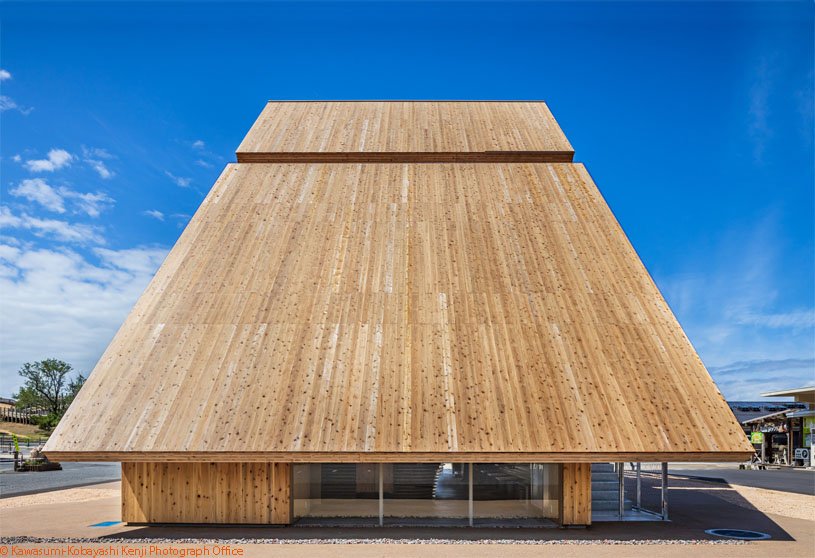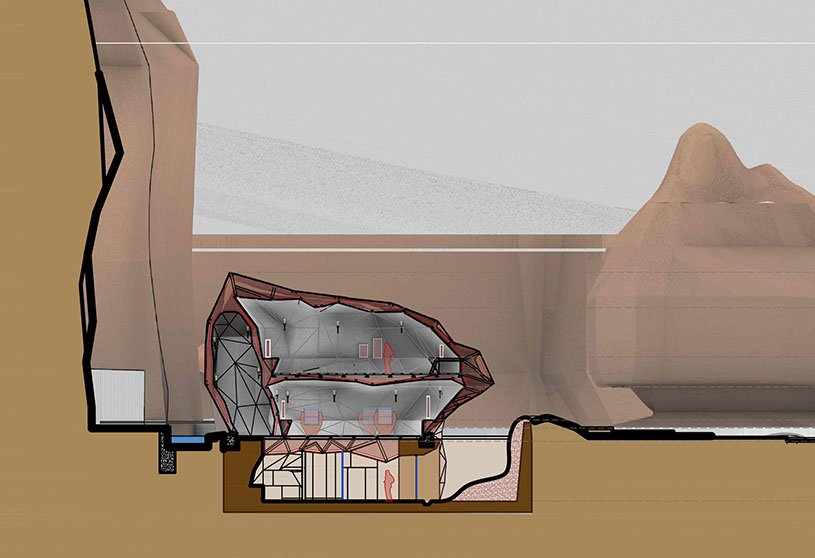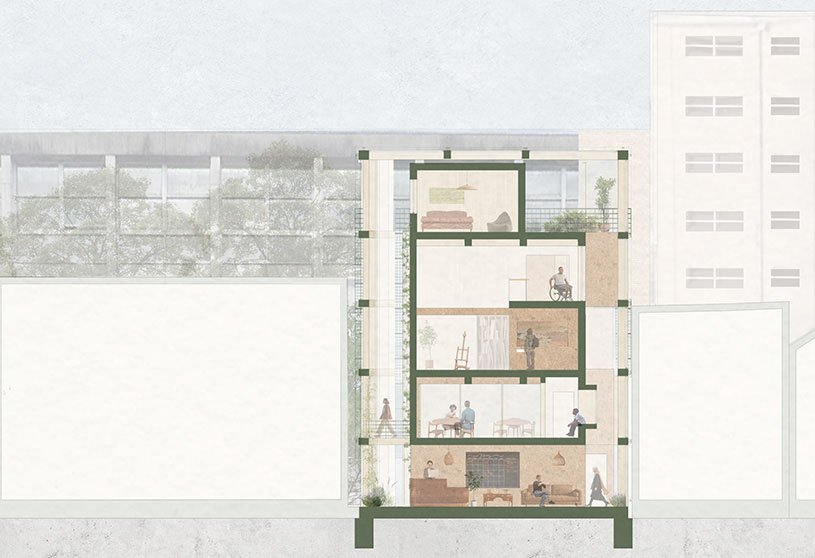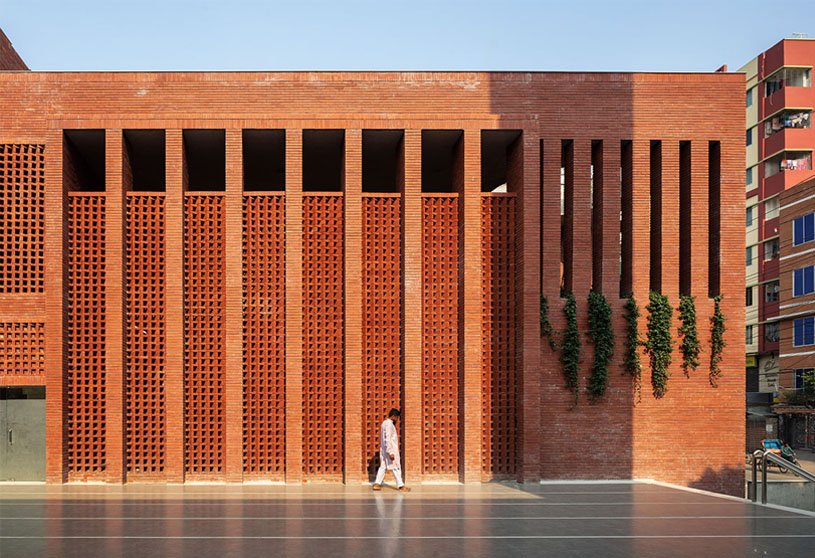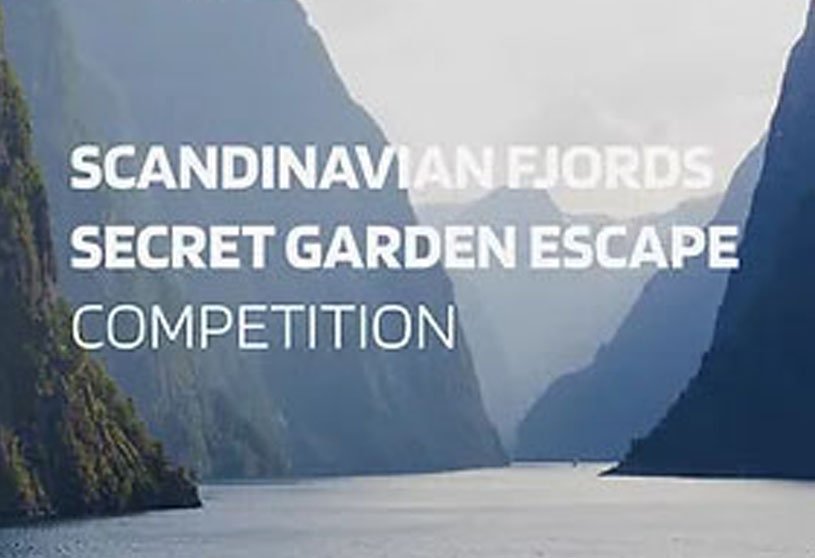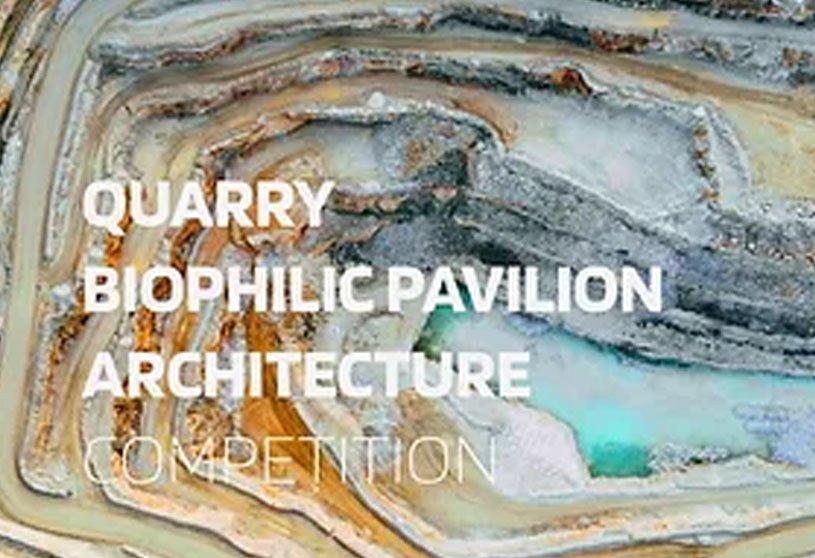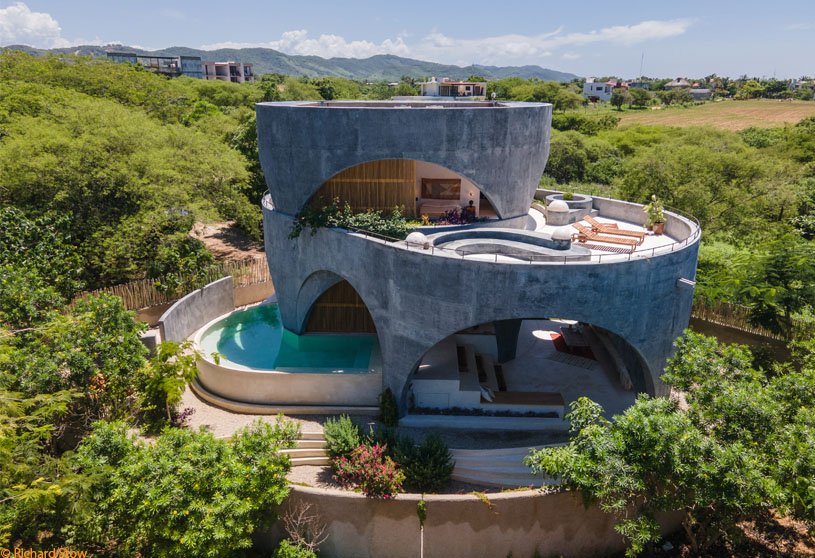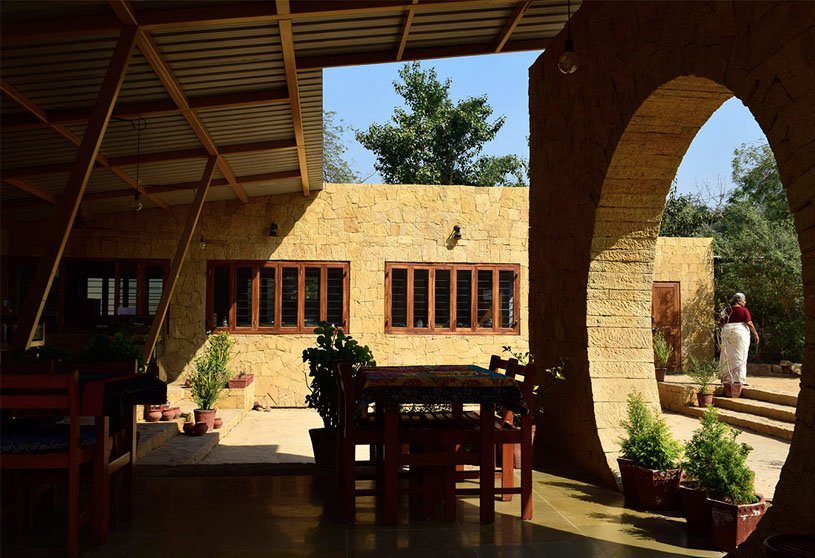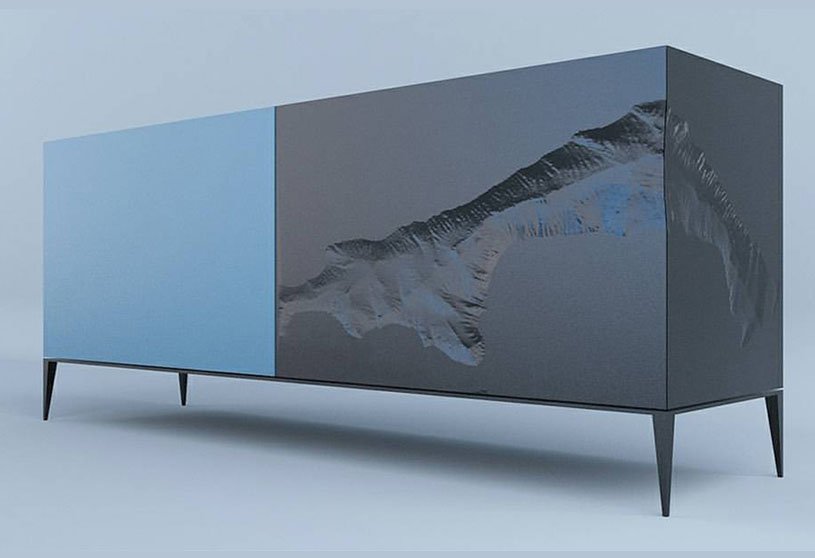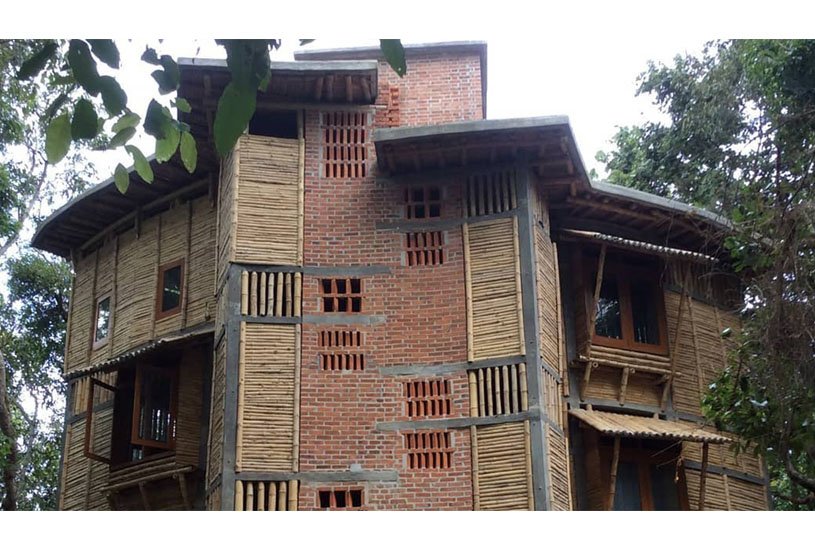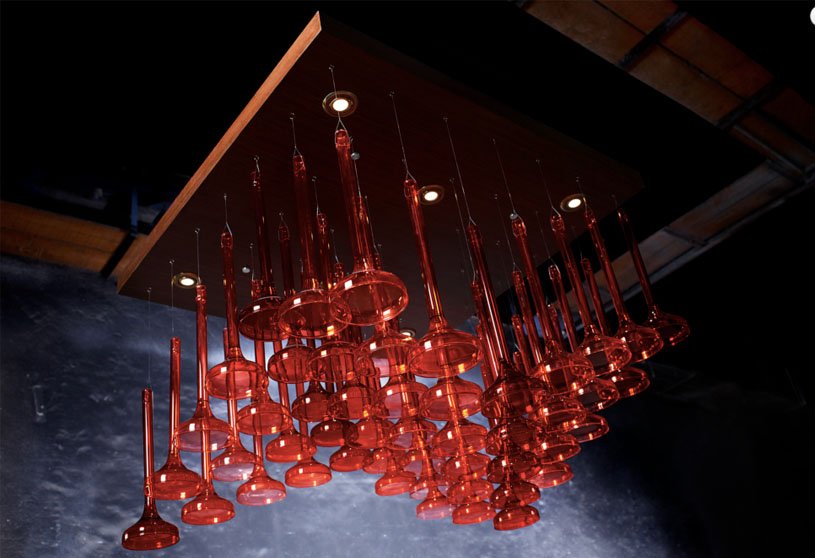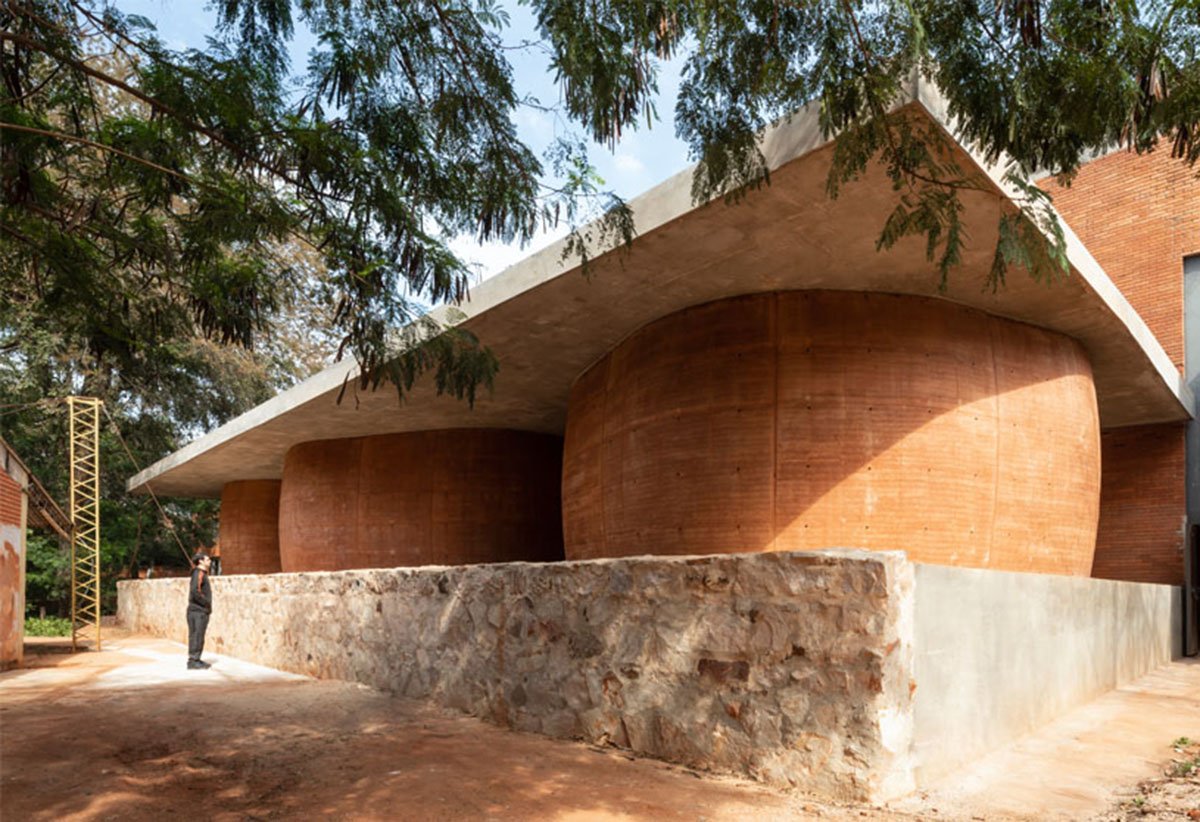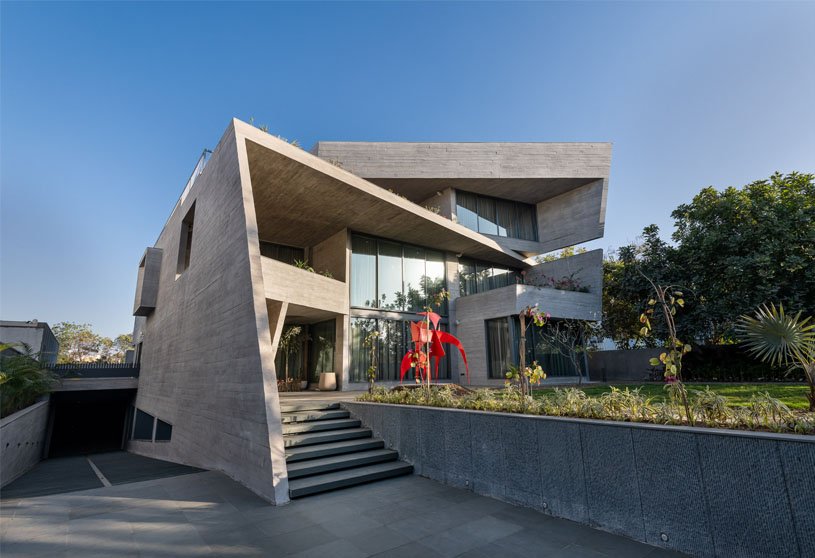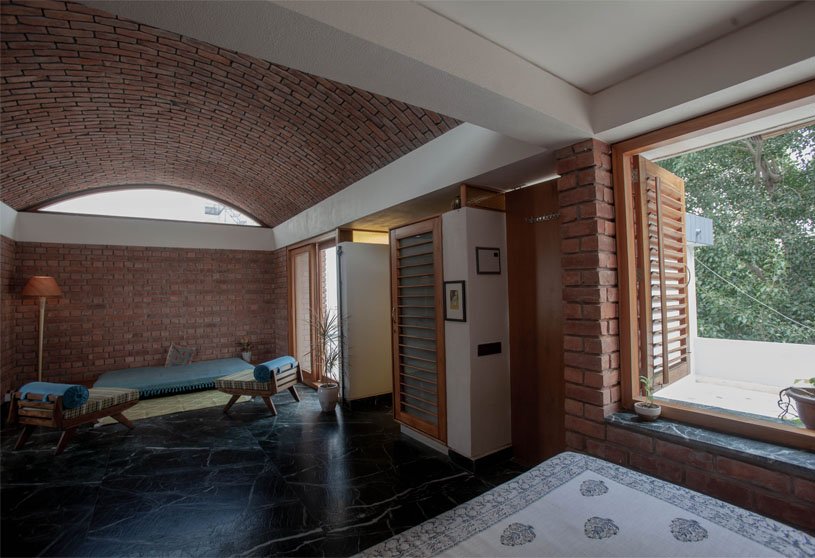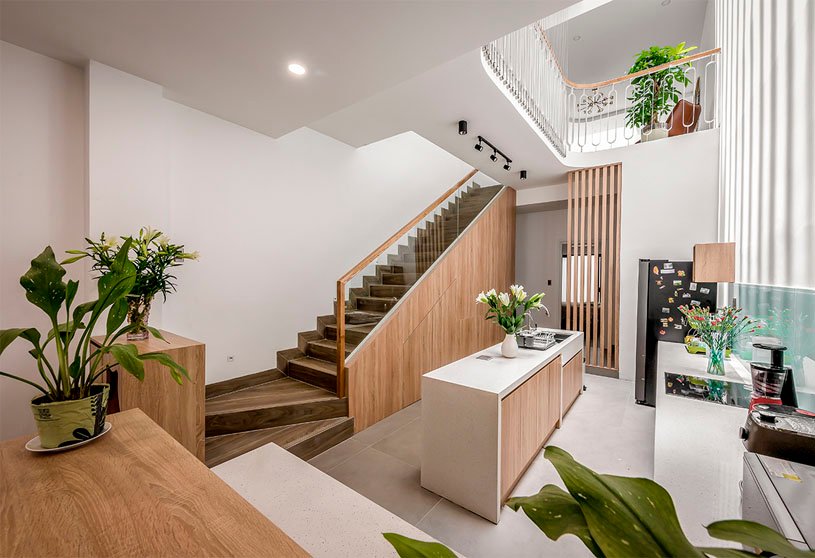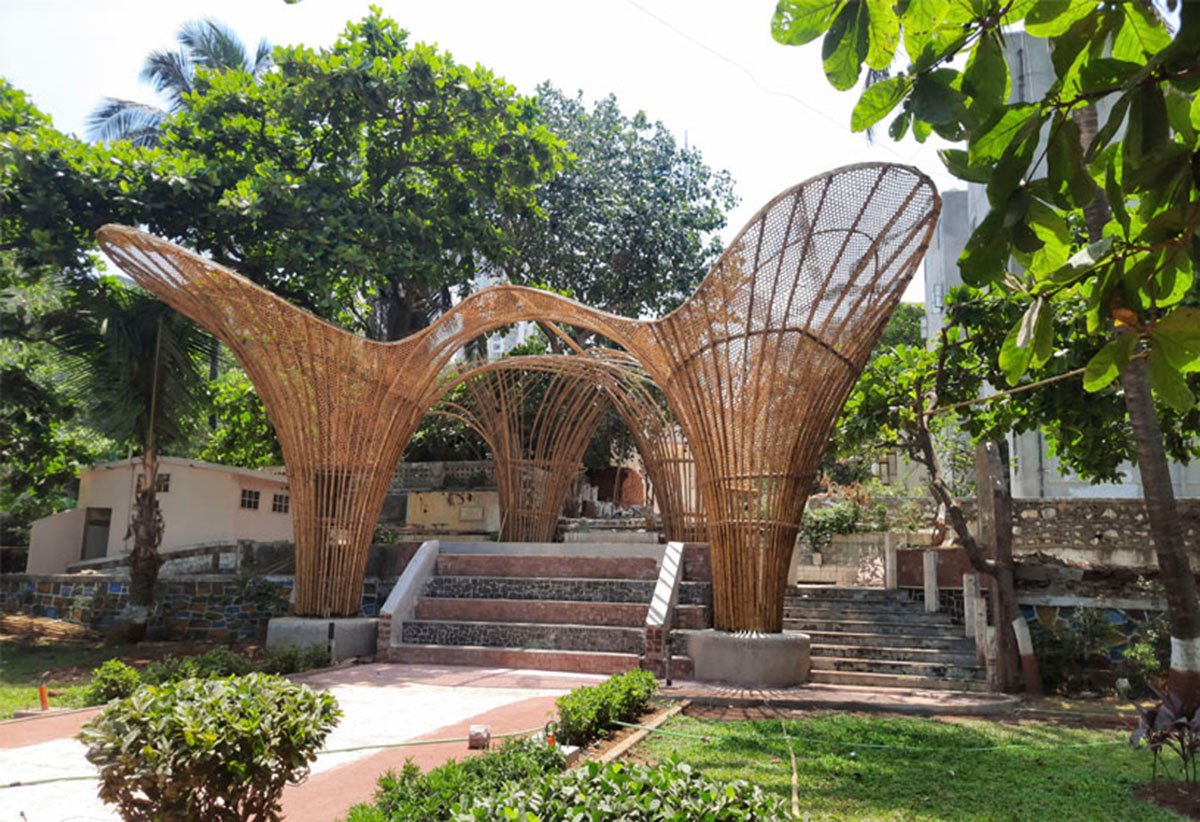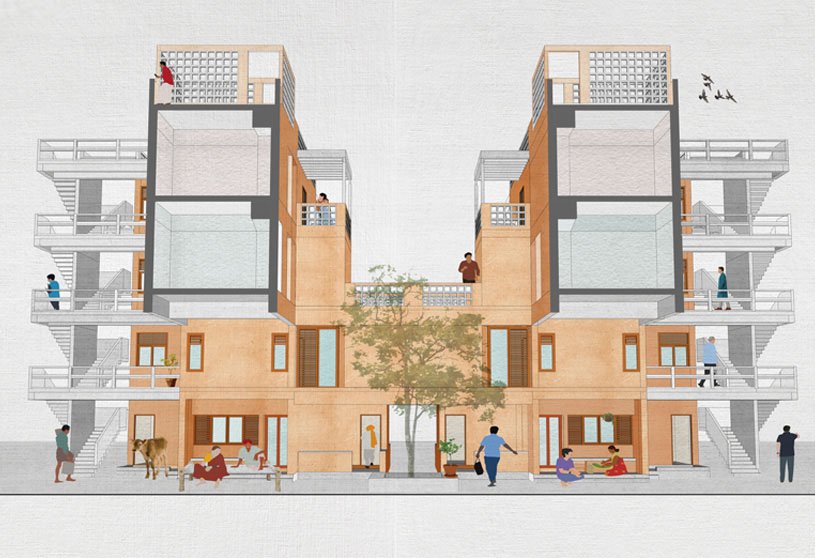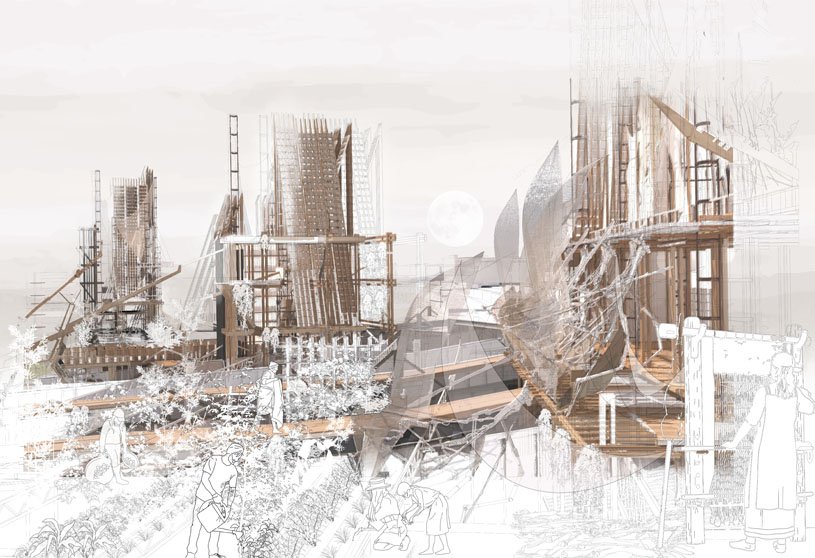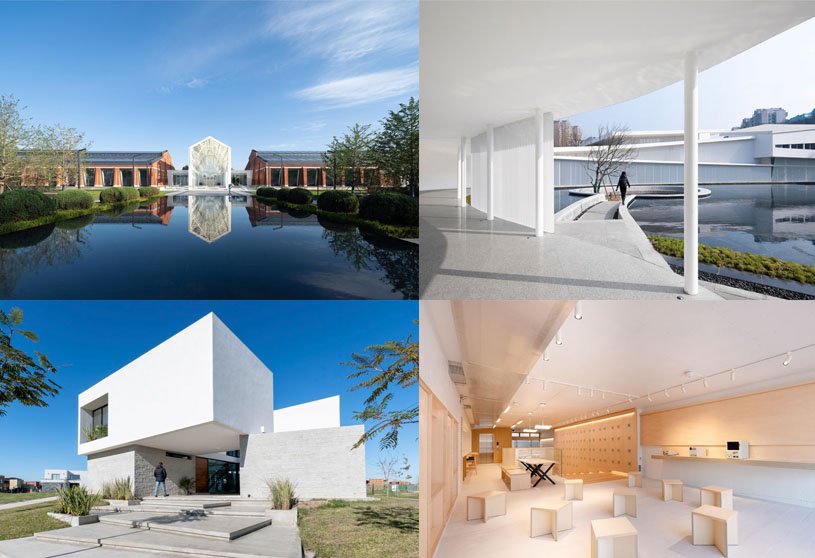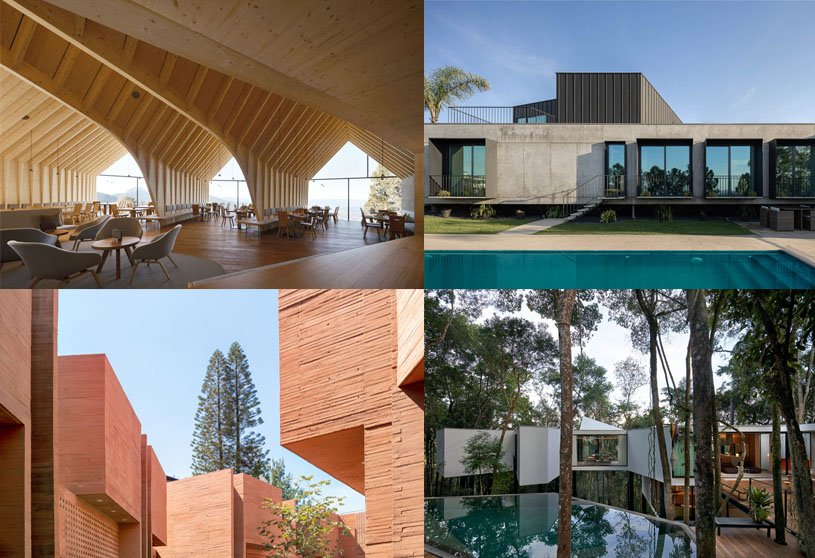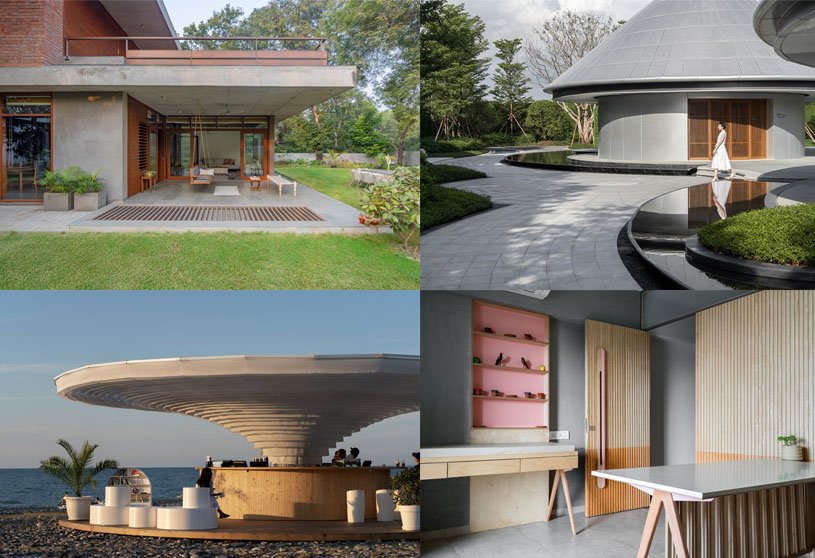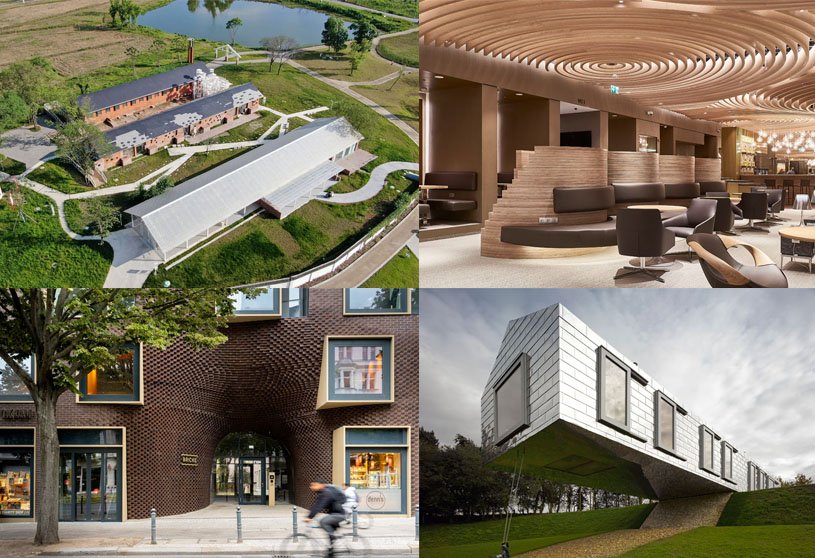Project8 months ago
One Mu Garden, designed by Atelier LI, emphasizes a garden-residence where the inner atmosphere takes priority over the surrounding environment. The layout reveals that the buildings are arranged along the edges, with gardens placed at the center. These gardens act as peaceful sanctuaries, promoting a connection with nature and nurturing a sense of community among residents.
Project8 months ago
The Infinite Rise, a residence by Earthscape Studio, seamlessly bridges humans and nature, embracing the natural terrain. The design features a central courtyard for light and ventilation, while a gabion wall shields against strong winds without obstructing views. Constructed with eco-friendly materials, the structure effortlessly merges with its surroundings, achieving the highest standards of sustainability.
Project8 months ago
Potash Tower, designed by INI Design Studio, exemplifies modern corporate architecture, elevating office space design beyond basic functionality. The building maximizes space efficiency, prioritizes sustainability, and embodies the brand’s identity. Its innovative structure and striking aesthetics transform the workplace experience, encouraging both collaboration and creativity.
Compilation8 months ago
Archidiaries is excited to share the Project of the Week – EE House | WOS Architects. Along with this, the weekly highlight contains a few of the best projects, published throughout the week. These selected projects represent the best content curated and shared by the team at ArchiDiaries.
Project8 months ago
Kaarya Shala by Aangan Architects is a workspace rooted in sustainability, with its design and materials focused on reuse, recycling, and climate response. The simple layout reflects the firm’s philosophy of integrating people, place, and culture, while the expansive design addresses climate needs. The project blends informality with formality, tradition with change, and finds beauty in the overlooked.
Project8 months ago
Casa Toro, designed by Estudio Carroll, features a distinctive geometry that adapts to the land, seamlessly integrating with nature. Its two cylindrical volumes form a blue concrete structure inspired by the ocean, with an open design that fosters seamless interaction between residents and nature. Inspired by wind and sea currents, the project prioritizes energy efficiency while offering a tranquil, harmonious retreat.
Practice8 months ago
Estudio Carroll is a practice focused on understanding the current needs of modern architecture, implementing innovative technology and materials. The studio strives to create projects beyond the inert that serve as catalysts for social change across the urban spectrum. At the same time, they generate projects, pieces, and buildings based on avant-garde, transgressive, and conscious concepts.
Project8 months ago
Origami House, designed by Alexis Dornier, is a folded pavilion structure that celebrates craft and texture while seamlessly blending indoor and outdoor spaces. Extending in all directions, it connects to multiple cubic volumes. Resting on a sturdy plinth, the residence offers shelter from the sun and heavy tropical rains while maintaining an uninterrupted connection to the surrounding rice fields and jungle.
Project8 months ago
The Langfang Beifengdao Garbage Transfer Station, designed by Atelier Ingarden, leverages the environmentally friendly qualities of wood to transform the typically negative perception of urban garbage stations. The design of the facility integrates the natural structural logic of wooden beams and columns, creating a seamless harmony between architecture, structure, and space.
Practice8 months ago
Atelier Ingarden, an architecture practice based in Hangzhou, is influenced by the Chinese garden philosophy of 2012 Pritzker Prize-winning architect, Wang Shu. The practice focuses on the traditional Chinese aesthetic idea of “architecture, village, and city are all gardens” and attempts to complete the architectural design with “basic construction” as the main method in various environments in China.
Project9 months ago
The Visitor Facilities “U Prutu,” designed by Prokš Přikryl Architekti, is a flexible, floating structure located by the City Reservoir. Its adaptable design accommodates multiple functions, with the space divided into three equal sections: a kiosk, a covered seating area, and public restrooms. Thoughtfully integrated into its natural environment, the facility enhances the diverse ecosystem of the reservoir’s various areas.
Project9 months ago
Bak Mei, a restaurant interior designed by Salone Del Salon, uses an artistic and narrative approach to evoke a subtle elegance of Lingnan garden architecture while seamlessly incorporating the brand’s local cultural roots into the design. This design creates a ceremonial experience for modern banquets by fostering a strong bond between space and diners, senses and atmosphere, and emotions and settings.
Selected Academic Projects
Project9 months ago
Bellevue – A House in Park, crafted by UA Lab (Urban Architectural Collaborative), celebrates the activity of seating, relaxing, and socializing in harmony with nature. The design features a sleek cuboidal pavilion with a combination of pergolas and a flat roof, allowing for an intriguing play of light and shadow. This interplay adds a dynamic quality to the linear spaces while fostering a strong connection to the natural surroundings.
Academic Project9 months ago
‘For All Generations’ is a bachelors design project on urban housing by Atsuki Sato from the ‘Monash Art, Design & Architecture’ that explores the ‘Postcode 3000’ policy from the 1990s in a contemporary Melbourne context. The project aims to transform underutilized commercial buildings into a vibrant, multi-generational living space. It promotes inclusivity and community through well-designed housing clusters, shared amenities, a public library, and a communal rooftop garden, while fostering a sustainable and inclusive urban environment.
Project9 months ago
Weng’s Factory / Co-Working Space, designed by Architect Nonsense, showcases a refurbishment concept that bridges the past and present. The design highlights the authenticity of materials and the factory’s distinctive character, incorporating elements from the site itself. It creates a space that merges a genuine commitment to community coexistence with modern functionality to address contemporary needs.
Project9 months ago
The Duling Educational & Cultural Centre by Project Mingde (The University of Hong Kong) showcases a culturally respectful sustainable design. The project aimed to meet community needs while respecting Hakka culture’s values. Its design principle, grounded in sustainability and tradition, transforms a village beset by challenges into a safe space for children to play and learn and a place for villagers to connect.
Practice9 months ago
Project Mingde (The University of Hong Kong) is an architecture practice based in Hong Kong, China.
Project9 months ago
OfficeR by Plan Loci is a masterful response to the unique site, layering two distinct orientations to create a dynamic and sustainable design. The building establishes a new standard for environmentally responsible architecture with its innovative use of salvage and reclamation materials and dedication to reducing waste and heat consumption. It showcases that a design can be both aesthetically pleasing and ecologically sound.
Project9 months ago
Langeveld Building by Paul de Ruiter Architects redefines sustainable learning spaces with a focus on innovation, nature, and student well-being. Designed with biophilic principles in mind, the building recalls a connection to nature and places environmental consciousness. It features a home-like atmosphere with abundant greenery, with the central atrium featuring real, untreated tree trunks that bring the outdoors inside.
Practice9 months ago
Paul de Ruiter Architects is an architecture firm committed to designing sustainable buildings that positively impact people and the environment. Known for innovation, the studio creates energy-generating structures using healthy materials that support biodiversity. Through close collaboration with clients and partners, Paul de Ruiter Architects continues to set new standards and shape the future of architecture.
Project9 months ago
Vrundavan, a residence by DF Architects, seamlessly combines traditional and contemporary design elements to create a living space that exudes elegance, practicality, and cultural richness. The architecture features refined arches, detailed jali work, and meticulously crafted brickwork, while modern touches such as circular cutouts and a dramatic triple-height volume promote a sense of openness and sustainability.
Project9 months ago
EE House, a project by WOS Architects, serves a dual purpose, functioning both as a residence for one and as a communal space for a closely knit family. With ample space and greenery, the house has been designed to foster a variety of family activities. The design seamlessly connects the indoor, balcony, garden, and communal spaces, allowing for a more cohesive and functional home.
Practice9 months ago
WOS Architects, based in Bangkok, is a small practice run by two architects, specializing in architectural design, interior design, and the spaces in between. They believe in simplicity and practicality, yet also embrace ambiguity. Their approach to architecture focuses on creating places for dwellers, guests, and nature, with boundaries that extend beyond the perimeter of buildings.
Project9 months ago
Haven – The Eternal Experience Pavilion by Earthscape Studio is an innovative Timbrel vaulting structure emphasizing affordability and sustainability, built without the use of steel or concrete. Its design harmonizes with the natural terrain, blending seamlessly into the landscape and surrounding trees. The structure’s layout preserves the original landform, ensuring minimal disruption to the environment.
